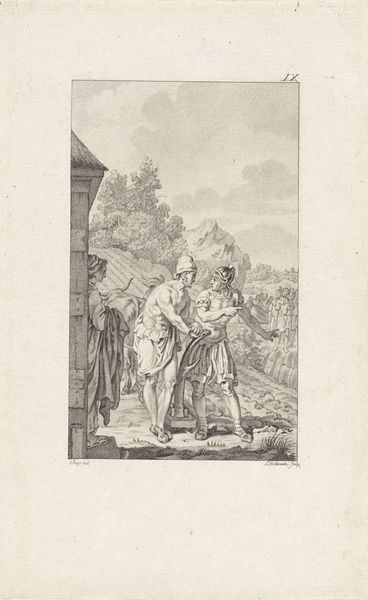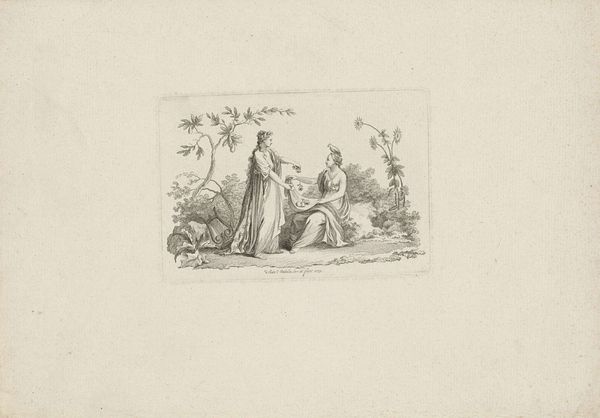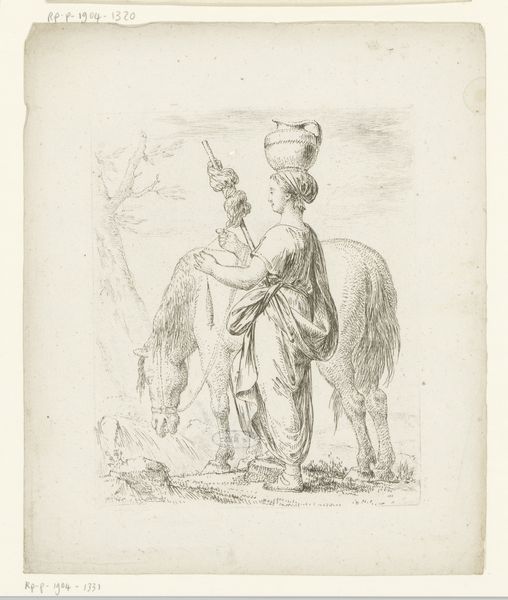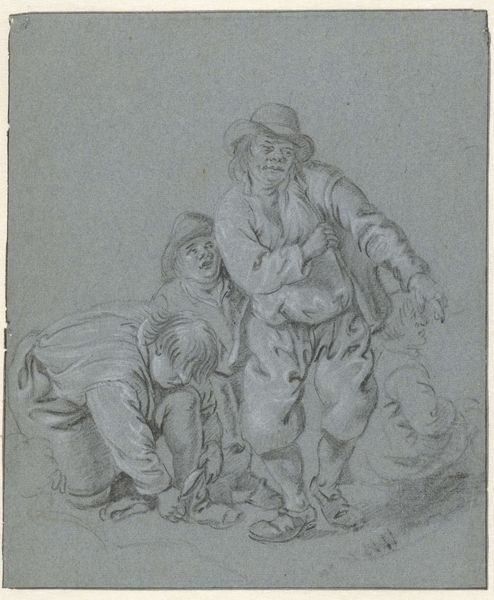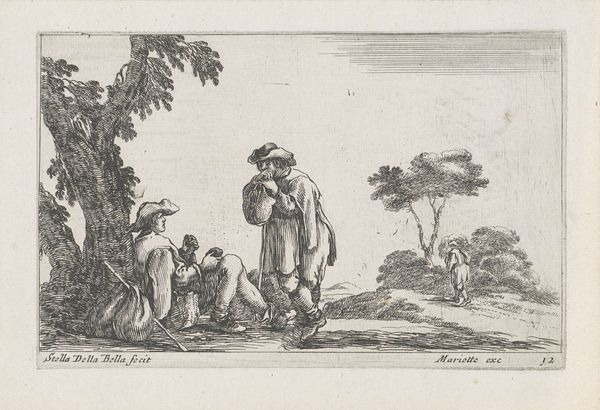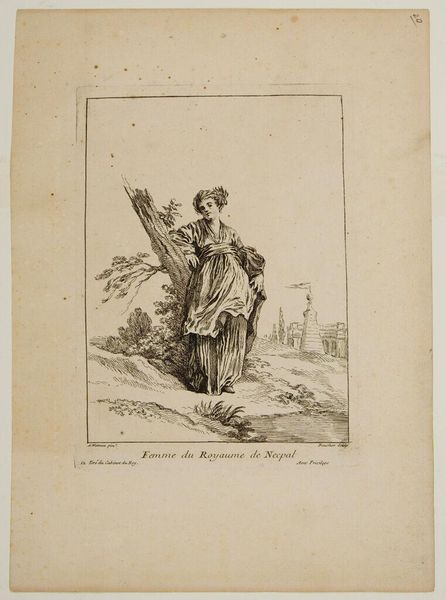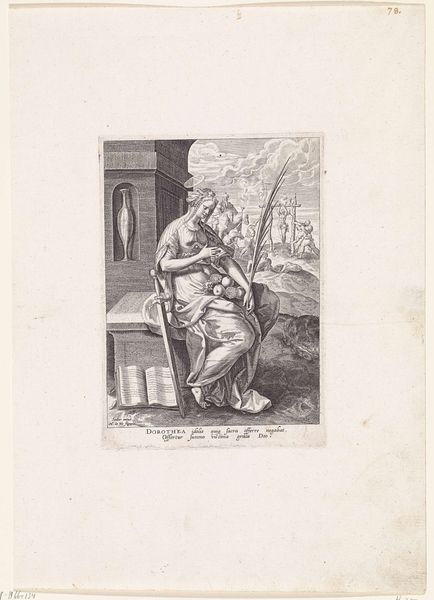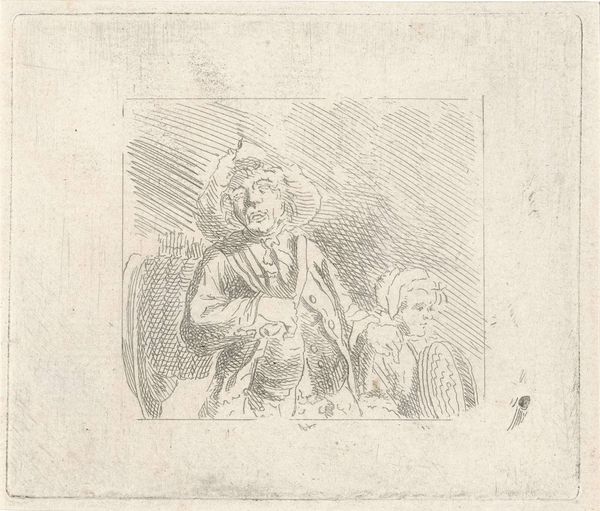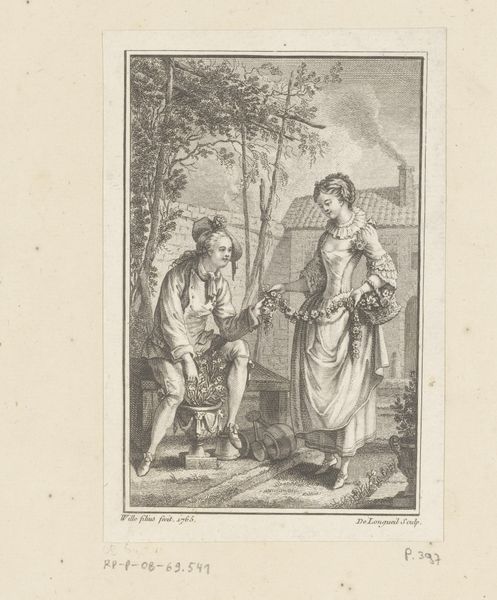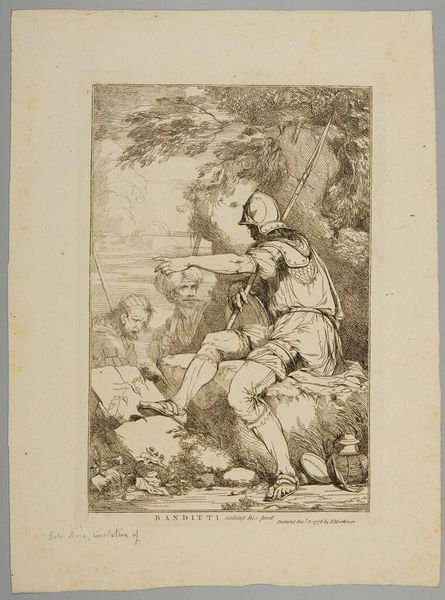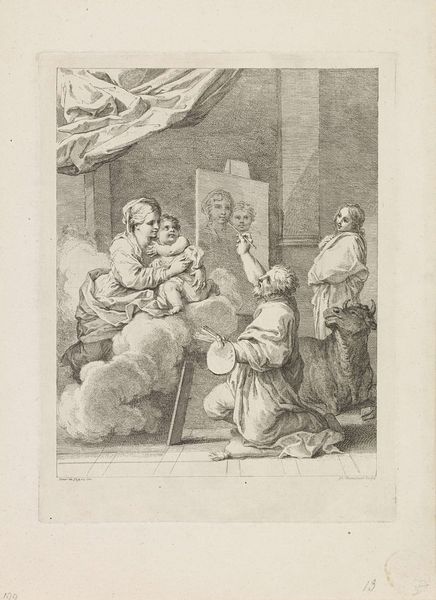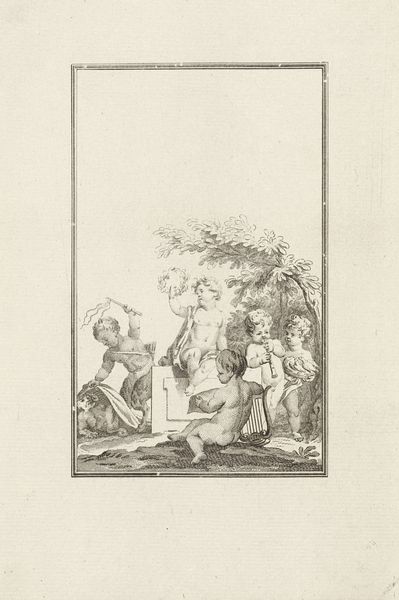
drawing, etching
#
portrait
#
drawing
#
etching
#
old engraving style
#
personal sketchbook
#
sketchwork
#
sketchbook drawing
#
genre-painting
Dimensions: height 110 mm, width 96 mm
Copyright: Rijks Museum: Open Domain
Editor: Here we have "Man op een kruk bij een vuur" by Vincent van der Vinne van Lee, made sometime between 1808 and 1876. It’s an etching, a drawing with delicate lines. I’m immediately struck by its seemingly casual nature, like a snapshot from daily life. What do you see in this piece, looking beyond the immediate imagery? Curator: I see the etching primarily as an object born from specific material conditions. Think about the copper plate, the acids used to bite into the metal, the press required for printing – all these elements dictated the aesthetic possibilities. What social class would have owned such a print, and how would it have been consumed? Was it for private enjoyment, or distributed more widely? Editor: That's interesting. I was focused on the man himself, his clothing and how the others around him were dressed too, suggesting his social standing. Curator: Exactly. His clothing indicates a certain access to textiles and perhaps relative comfort, which further embeds this image in a network of material production and consumption. The very act of etching also suggests a specific type of labour and skill. Was this created to celebrate work, or to be purchased by the emerging middle class? What can the distribution and price point tell us about contemporary society? Editor: So you're saying understanding how it was made and who consumed it tells us more than just looking at it? Curator: Precisely! The image is almost a by-product of the larger economic and material reality of its time. The details, the clothing, the stool—all speak volumes about the societal context of their making and exchange. Editor: I see it now. I was only focused on the "what," not the "how" or "why" it was produced and received. That definitely adds another layer to how I’ll approach art in the future. Curator: Thinking about art this way is really enriching, isn't it? It turns art history into a fascinating study of our relationship with things and with labour.
Comments
No comments
Be the first to comment and join the conversation on the ultimate creative platform.
